A Sapa Minority Trek – with guides forced upon us

If you’re thinking of trekking to Sapa’s minority villages, think again. I’m not saying it’s a no-go, but come prepared to face ethnic minorities who will do their best to extract as much money from you as they can. Be it children with cute faces, or even adult women in their minority gear. They are appear to be nice and friendly during the trek, but expect you to buy their souvenirs and give tips at the end.

In summer, I can imagine the scenery to be beautiful. With the plantations coloured in green, and sunlight lightening up the mountains and streams. We arrived in January and it was cold, muddy and slightly gloomy – certainly not the best time for trekking.
A tip – you can purchase waterproof Wellington boots to keep your feet warm and try – it’s very effective. A fellow traveler had her Timberland trek shoes soaked in mud :/
There’s an option for a stayover at a minority’s house. Perhaps it would have changed our perceptions. But that one day trek made us feel un-welcomed, and got me thinking – “Can a place be too touristy?”
* * *

It all starts during the morning of the trek. A group of ethnic minority girls and women stood waiting at the starting point of the trek. They talk to us and make us feel welcomed. I give them non-committal replies, knowing that a gift or token of money is expected, at the end of the journey. It is a long walk, 30 minutes have passed, I have ignored them but they continue to follow us.
As we go along, the terrain gets muddier, and the paths, more slippery. We are wearing boots but it was still difficult to walk. My guide is a 10-year-old girl who is half my size. She offers me her hand. I want to say no, knowing that I can navigate through the terrain well myself. But who can refuse a little girl? My experience in India has hardened my heart – no giving to beggars, no accepting help from people who appear to be kind. No matter how cute the children are, or how pitiful they appear.
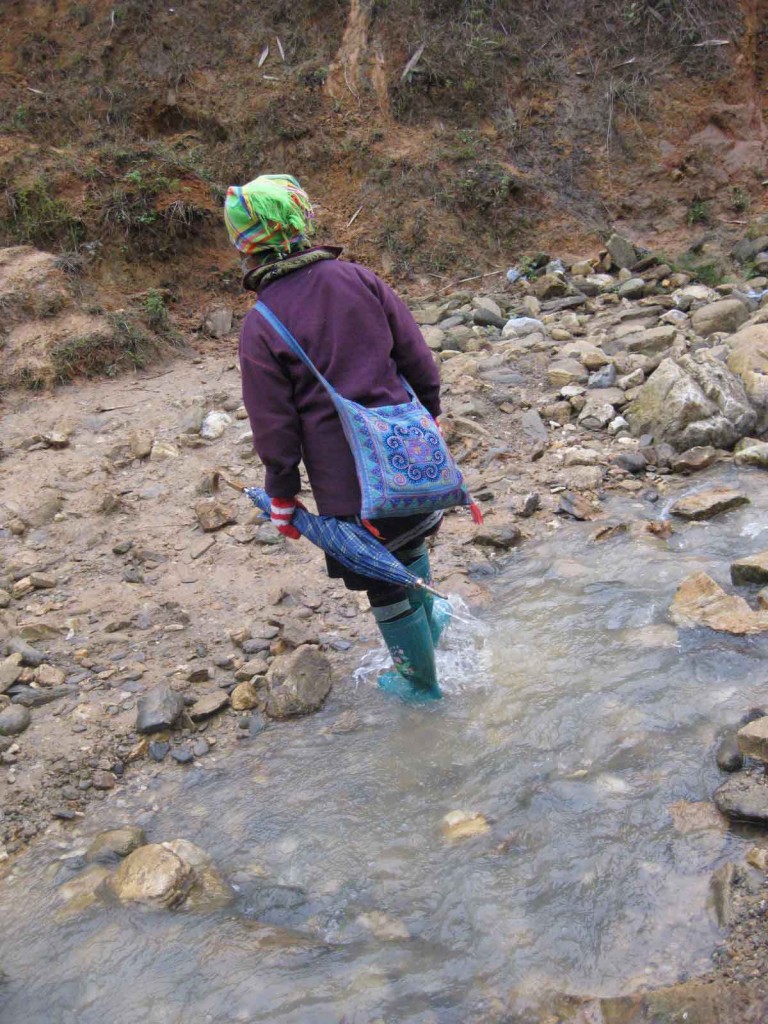
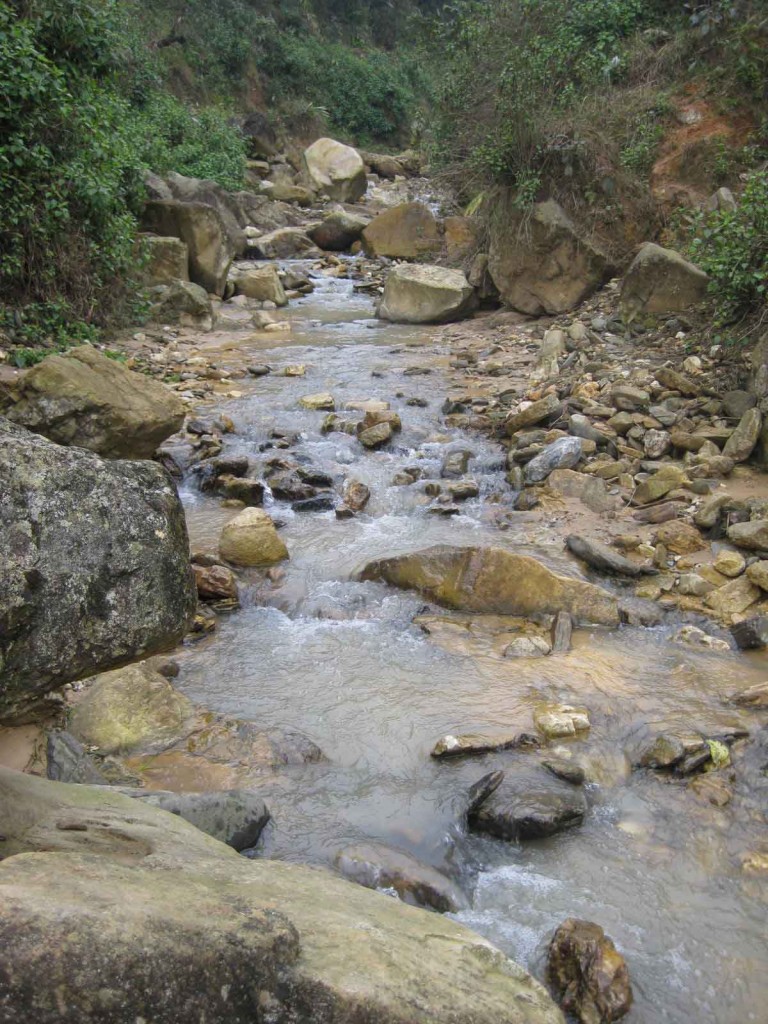
But for some reason, I get the sense that she is not the hard-core type. Not yet. Probably asked by her family to do this. I reach out for her hand, and we walk on together.
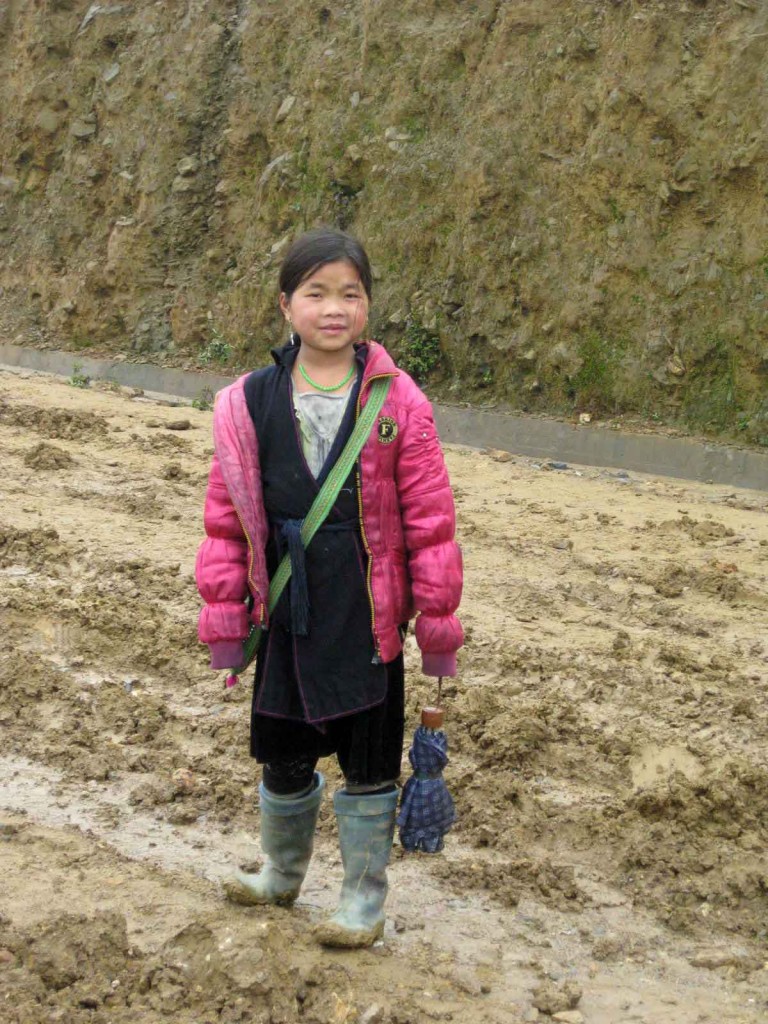
My hand is ice-cold, while hers is warm. It is comforting as we walk. I am scared that I might pull her down should I fall, as she is so small. Once, I near lost my balance, and she let out a gasp. I quickly steadied myself. What if she gets hurt?
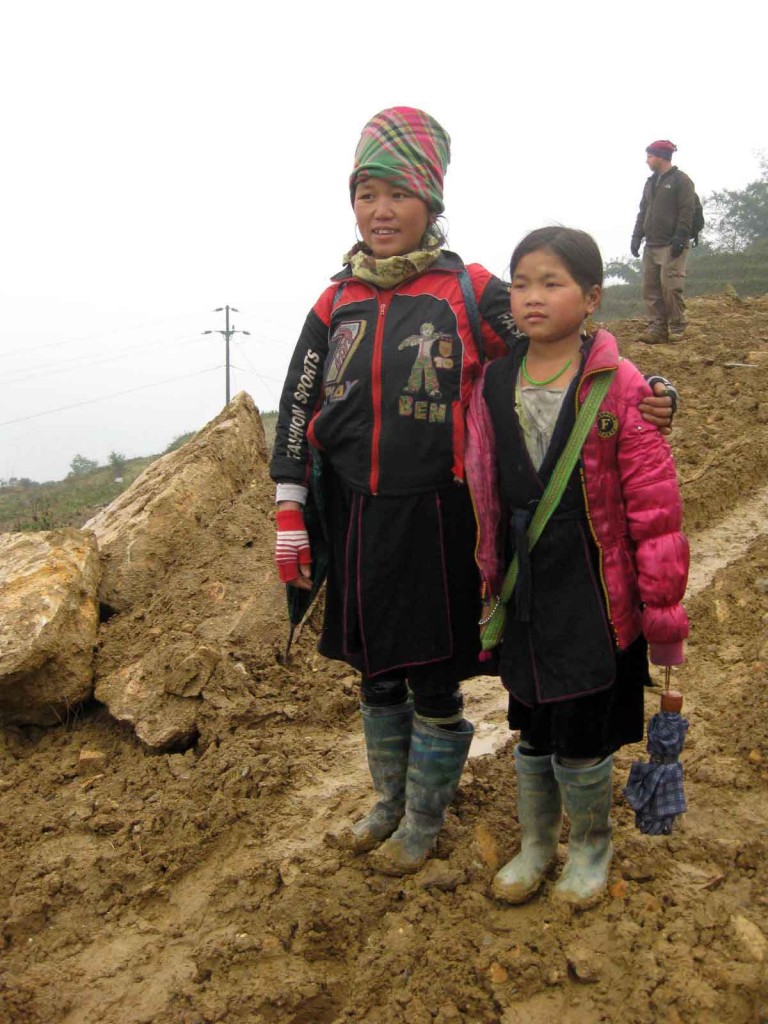
Friend W and Friend S’s guides are older women. They are 25, and are already married with children. They are definitely not as cute, and have well define lines on their skin. But they are helpful.

My little guide walks steadily on higher ground, though it is at the edge of the cliff. I am a little worried for her, but she seems pretty confident.
We take many photos of her – she is so cute.
But the friendship ends as soon as it starts – at the Lao Chai village which we stop for lunch.”Buy from me,” my little guide says as she takes down her basket and shows me many bags and shawls.”How much?” I asked, pointing to this headscarf they wear on their heads.
“350,000 dong, (SGD22)” she says.
I am shocked. This is way too much for a student travelling on a budget. I look at all her other items. They are too expensive. “What is the smallest thing you have?”
She fishes out a bangle. “20,000 for one. (SGD1.50)
Before she could even finish, a group of girls crowd around her, pestering me to buy other souvenirs such as pens, bags and scarves. I felt very annoyed. They had drowned out my little guide out, but she manages to pull through eventually, with her basket. “Buy from me,” she says.
In the end, I take a little bracelet, and put it on her little wrist.
“For you. Study hard.” I said, as if she could understand. I slip a 20,000 dong note to her and wriggle past all the hawks.
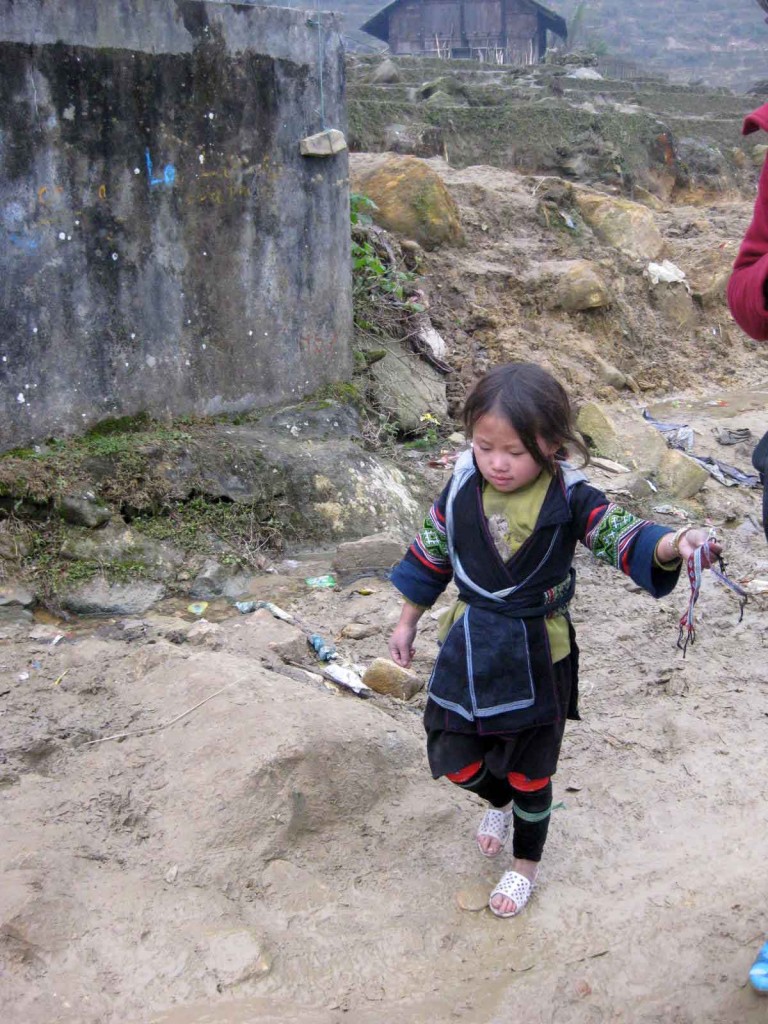
Friend W and S are not having an easy time. Their guides are experienced, fierce grown up woman.
“Give them the money and go!” I yelled, trying to make myself heard from the crowd.
In the end, we gave USD1 to each of them, and walked away. Friend S said her guide scowled, and said something like vulgarities in her minority language.

At the place we had lunch, a swarm of them hang over the staircase, some pestering the Westerners non-stop.
“Buy from me, Sir.” They say repeatedly.
I see a Caucasian lady buying a scarf from one of them. She doesn’t bargain, so I figure it is quite expensive.
There is no more friendship. There is no more smiles. There is only bad memories.
What seemed like a kind gesture had ulterior motives behind. It’s not that we didn’t expect that, it’s just that.. I didn’t expect to be so affected by it.

The trek continues after lunch, and see a school. “The school is funded by the Vietnamese government. Children go there free,” the tour guide says.
The children are happy. It is their break and they play games, just like the kids in Singapore.
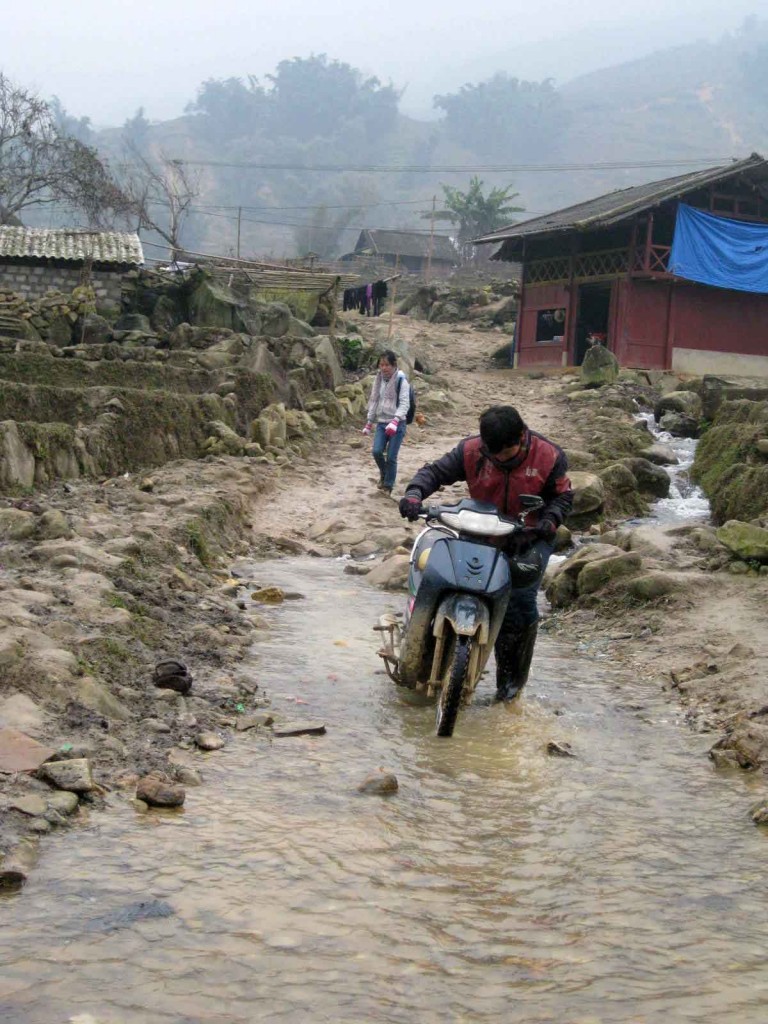
“Last time it was agriculture and forestry. Now there is tourism. The people are more rich now. They have motorbikes.” She said pointing to one that just ride pass us.
As I walk on, I take a photo of a boy on a rock.
“MONEY! MONEY!” he cries out.
When I ignore him and try to walk on, he lifts his stick, like an M16 machine gun, and goes BANG! BANG! BANG!
What a welcome.


Leave a Reply